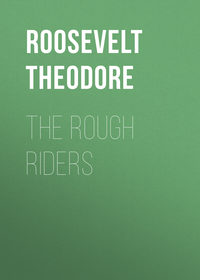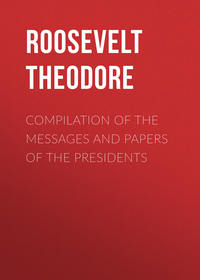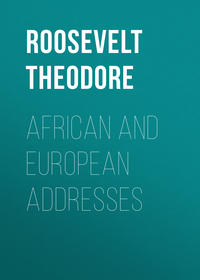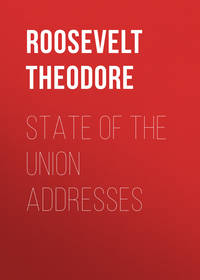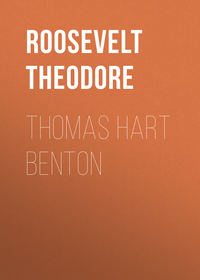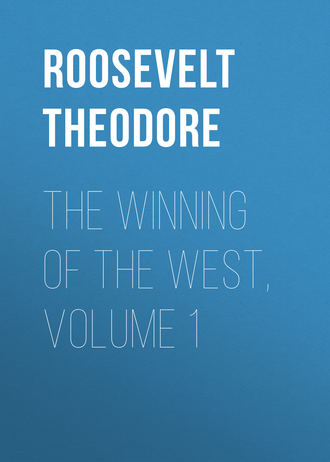 полная версия
полная версияThe Winning of the West, Volume 1
From the overthrow of Pontiac to the outbreak of the Revolution the settlers in the Illinois and round Vincennes lived in peace under their old laws and customs, which were continued by the British commandants.15 They had been originally governed, in the same way that Canada was, by the laws of France, adapted, however, to the circumstances of the new country. Moreover, they had local customs which were as binding as the laws. After the conquest the British commandants who came in acted as civil judges also. All public transactions were recorded in French by notaries public. Orders issued in English were translated into French so that they might be understood. Criminal cases were referred to England. Before the conquest the procureur du roi gave sentence by his own personal decision in civil cases; if the matters were important it was the custom for each party to name two arbitrators, and the procureur du roi a fifth; while an appeal might be made to the council superieur at New Orleans. The British commandant assumed the place of the procureur du roi, although there were one or two half-hearted efforts made to introduce the Common Law.
The original French commandants had exercised the power of granting to every person who petitioned as much land as the petitioner chose to ask for, subject to the condition that part of it should be cultivated within a year, under penalty of its reversion to "the king's demesnes."16 The English followed the same custom. A large quantity of land was reserved in the neighborhood of each village for the common use, and a very small quantity for religious purposes. The common was generally a large patch of enclosed prairie, part of it being cultivated, and the remainder serving as a pasture for the cattle of the inhabitants.17 The portion of the common set aside for agriculture was divided into strips of one arpent in front by forty in depth, and one or more allotted to each inhabitant according to his skill and industry as a cultivator.18 The arpent, as used by the western French, was a rather rough measure of surface, less in size than an acre.19 The farms held by private ownership likewise ran back in long strips from a narrow front that usually lay along some stream.20 Several of them generally lay parallel to one another, each including something like a hundred acres, but occasionally much exceeding this amount.
The French inhabitants were in very many cases not of pure blood. The early settlements had been made by men only, by soldiers, traders, and trappers, who took Indian wives. They were not trammelled by the queer pride which makes a man of English stock unwilling to make a red-skinned woman his wife, though anxious enough to make her his concubine. Their children were baptized in the little parish churches by the black-robed priests, and grew up holding the same position in the community as was held by their fellows both of whose parents were white. But, in addition to these free citizens, the richer inhabitants owned both red and black slaves; negroes imported from Africa, or Indians overcome and taken in battle.21 There were many freedmen and freedwomen of both colors, and in consequence much mixture of blood.
They were tillers of the soil, and some followed, in addition, the trades of blacksmith and carpenter. Very many of them were trappers or fur traders. Their money was composed of furs and peltries, rated at a fixed price per pound;22 none other was used unless expressly so stated in the contract. Like the French of Europe, their unit of value was the livre, nearly equivalent to the modern franc. They were not very industrious, nor very thrifty husbandmen. Their farming implements were rude, their methods of cultivation simple and primitive, and they themselves were often lazy and improvident. Near their town they had great orchards of gnarled apple-trees, planted by their forefathers when they came from France, and old pear-trees, of a kind unknown to the Americans; but their fields often lay untilled, while the owners lolled in the sunshine smoking their pipes. In consequence they were sometimes brought to sore distress for food, being obliged to pluck their corn while it was still green.23
The pursuits of the fur trader and fur trapper were far more congenial to them, and it was upon these that they chiefly depended. The half-savage life of toil, hardship, excitement, and long intervals of idleness attracted them strongly. This was perhaps one among the reasons why they got on so much better with the Indians than did the Americans, who, wherever they went, made clearings and settlements, cut down the trees, and drove off the game.
But even these pursuits were followed under the ancient customs and usages of the country, leave to travel and trade being first obtained from the commandant24 for the rule of the commandant was almost patriarchal. The inhabitants were utterly unacquainted with what the Americans called liberty. When they passed under our rule, it was soon found that it was impossible to make them understand such an institution as trial by jury; they throve best under the form of government to which they had been immemorially accustomed—a commandant to give them orders, with a few troops to back him up.25 They often sought to escape from these orders, but rarely to defy them; their lawlessness was like the lawlessness of children and savages; any disobedience was always to a particular ordinance, not to the system.
The trader having obtained his permit, built his boats,—whether light, roomy bateaux made of boards, or birch-bark canoes, or pirogues, which were simply hollowed out logs. He loaded them with paint, powder, bullets, blankets, beads, and rum, manned them with hardy voyageurs, trained all their lives in the use of pole and paddle, and started off up or down the Mississippi,26 the Ohio, or the Wabash, perhaps making a long carry or portage over into the Great Lakes. It took him weeks, often months, to get to the first trading-point, usually some large winter encampment of Indians. He might visit several of these, or stay the whole winter through at one, buying the furs.27 Many of the French coureurs des bois, whose duty it was to traverse the wilderness, and who were expert trappers, took up their abode with the Indians, taught them how to catch the sable, fisher, otter, and beaver, and lived among them as members of the tribe, marrying copper-colored squaws, and rearing dusky children. When the trader had exchanged his goods for the peltries of these red and white skin-hunters, he returned to his home, having been absent perhaps a year or eighteen months. It was a hard life; many a trader perished in the wilderness by cold or starvation, by an upset where the icy current ran down the rapids like a mill-race, by the attack of a hostile tribe, or even in a drunken brawl with the friendly Indians, when voyageur, half-breed, and Indian alike had been frenzied by draughts of fiery liquor.28
Next to the commandant in power came the priest. He bore unquestioned rule over his congregation, but only within certain limits; for the French of the backwoods, leavened by the presence among them of so many wild and bold spirits, could not be treated quite in the same way as the more peaceful habitants of Lower Canada. The duty of the priest was to look after the souls of his sovereign's subjects, to baptize, marry, and bury them, to confess and absolve them, and keep them from backsliding, to say mass, and to receive the salary due him for celebrating divine service; but, though his personal influence was of course very great, he had no temporal authority, and could not order his people either to fight or to work. Still less could he dispose of their laud, a privilege inhering only in the commandant and in the commissaries of the villages, where they were expressly authorized so to do by the sovereign.29
The average inhabitant, though often loose in his morals, was very religious. He was superstitious also, for he firmly believed in omens, charms, and witchcraft, and when worked upon by his dread of the unseen and the unknown he sometimes did terrible deeds, as will be related farther on.
Under ordinary circumstances he was a good-humored, kindly man, always polite—his manners offering an agreeable contrast to those of some of our own frontiersmen,—with a ready smile and laugh, and ever eager to join in any merrymaking. On Sundays and fast-days he was summoned to the little parish church by the tolling of the old bell in the small wooden belfry. The church was a rude oblong building, the walls made out of peeled logs, thrust upright in the ground, chinked with moss and coated with clay or cement. Thither every man went, clad in a capote or blanket coat, a bright silk handkerchief knotted round his head, and his feet shod with moccasins or strong rawhide sandals. If young, he walked or rode a shaggy pony; if older, he drove his creaking, springless wooden cart, untired and unironed, in which his family sat on stools.30
The grades of society were much more clearly marked than in similar communities of our own people. The gentry, although not numerous, possessed unquestioned social and political headship and were the military leaders; although of course they did not have any thing like such marked preeminence of position as in Quebec or New Orleans, where the conditions were more like those obtaining in the old world. There was very little education. The common people were rarely versed in the mysteries of reading and writing, and even the wives of the gentry were often only able to make their marks instead of signing their names.31
The little villages in which they dwelt were pretty places,32 with wide, shaded streets. The houses lay far apart, often a couple of hundred feet from one another. They were built of heavy hewn timbers; those of the better sort were furnished with broad verandas, and contained large, low-ceilinged rooms, the high mantle-pieces and the mouldings of the doors and windows being made of curiously carved wood. Each village was defended by a palisaded fort and block-houses, and was occasionally itself surrounded by a high wooden stockade. The inhabitants were extravagantly fond of music and dancing;33 marriages and christenings were seasons of merriment, when the fiddles were scraped all night long, while the moccasined feet danced deftly in time to the music.
Three generations of isolated life in the wilderness had greatly changed the characters of these groups of traders, trappers, bateau-men, and adventurous warriors. It was inevitable that they should borrow many traits from their savage friends and neighbors. Hospitable, but bigoted to their old customs, ignorant, indolent, and given to drunkenness, they spoke a corrupt jargon of the French tongue; the common people were even beginning to give up reckoning time by months and years, and dated events, as the Indians did, with reference to the phenomena of nature, such as the time of the floods, the maturing of the green corn, or the ripening of the strawberries.34 All their attributes seemed alien to the polished army-officers of old France;35 they had but little more in common with the latter than with the American backwoodsmen. But they had kept many valuable qualities, and, in especial, they were brave and hardy, and, after their own fashion, good soldiers. They had fought valiantly beside King Louis' musketeers, and in alliance with the painted warriors of the forest; later on they served, though perhaps with less heart, under the gloomy ensign of Spain, shared the fate of the red-coated grenadiers of King George, or followed the lead of the tall Kentucky riflemen.
CHAPTER III.
THE APPALACHIAN CONFEDERACIES, 1765-1775
When we declared ourselves an independent nation there were on our borders three groups of Indian peoples. The northernmost were the Iroquois or Six Nations, who dwelt in New York, and stretched down into Pennsylvania. They had been for two centuries the terror of every other Indian tribe east of the Mississippi, as well as of the whites; but their strength had already departed. They numbered only some ten or twelve thousand all told, and though they played a bloody part in the Revolutionary struggle, it was merely as subordinate allies of the British. It did not lie in their power to strike a really decisive blow. Their chastisement did not result in our gaining new territory; nor would a failure to chastise them have affected the outcome of the war nor the terms of peace. Their fate was bound up with that of the king's cause in America and was decided wholly by events unconnected with their own success or defeat.
The very reverse was the case with the Indians, tenfold more numerous, who lived along our western frontier. There they were themselves our main opponents, the British simply acting as their supporters; and instead of their fate being settled by the treaty of peace with Britain, they continued an active warfare for twelve years after it had been signed. Had they defeated us in the early years of the contest, it is more than probable that the Alleghanies would have been made our western boundary at the peace. We won from them vast stretches of territory because we had beaten their warriors, and we could not have won it otherwise; whereas the territory of the Iroquois was lost, not because of their defeat, but because of the defeat of the British.
There were two great groups of these Indians, the ethnic corresponding roughly with the geographic division. In the northwest, between the Ohio and the Lakes, were the Algonquin tribes, generally banded loosely together; in the southwest, between the Tennessee—then called the Cherokee—and the Gulf, the so-called Appalachians lived. Between them lay a vast and beautiful region where no tribe dared dwell, but into which all ventured now and then for war and hunting.
The southwestern Indians were called Appalachians by the olden writers, because this was the name then given to the southern Alleghanies. It is doubtful if the term has any exact racial significance; but it serves very well to indicate a number of Indian nations whose system of government, ways of life, customs, and general culture were much alike, and whose civilization was much higher than was that of most other American tribes.
The Appalachians were in the barbarous, rather than in the merely savage state. They were divided into five lax confederacies: the Cherokees, Chickasaws, Choctaws, Creeks, and Seminoles. The latter were merely a southern offshoot of the Creeks or Muscogees. They were far more numerous than the northwestern Indians, were less nomadic, and in consequence had more definite possession of particular localities; so that their lands were more densely peopled.
In all they amounted to perhaps seventy thousand souls.36 It is more difficult to tell the numbers of the different tribes; for the division lines between them were very ill defined, and were subject to wide fluctuations. Thus the Creeks, the most formidable of all, were made up of many bands, differing from each other both in race and speech. The languages of the Chickasaws and Choctaws did not differ more from the tongue of the Cherokees, than the two divisions of the latter did from each other. The Cherokees of the hills, the Otari, spoke a dialect that could not be understood by the Cherokees of the lowlands, or Erati. Towns or bands continually broke up and split off from their former associations, while ambitious and warlike chiefs kept forming new settlements, and if successful drew large numbers of young warriors from the older communities. Thus the boundary lines between the confederacies were ever shifting.37 Judging from a careful comparison of the different authorities, the following estimate of the numbers of the southern tribes at the outbreak of the Revolution may be considered as probably approximately correct.
The Cherokees, some twelve thousand strong,38 were the mountaineers of their race. They dwelt among the blue-topped ridges and lofty peaks of the southern Alleghanies,39 in the wild and picturesque region where the present States of Tennessee, Alabama, Georgia, and the Carolinas join one another.
To the west of the Cherokees, on the banks of the Mississippi, were the Chickasaws, the smallest of the southern nations, numbering at the outside but four thousand souls;40 but they were also the bravest and most warlike, and of all these tribal confederacies theirs was the only one which was at all closely knit together. The whole tribe acted in unison. In consequence, though engaged in incessant warfare with the far more numerous Choctaws, Creeks, and Cherokees, they more than held their own against them all; besides having inflicted on the French two of the bloodiest defeats they ever suffered from Indians. Most of the remnants of the Natchez, the strange sun-worshippers, had taken refuge with the Chickasaws and become completely identified with them, when their own nationality was destroyed by the arms of New Orleans.
The Choctaws, the rudest and historically the least important of these Indians, lived south of the Chickasaws. They were probably rather less numerous than the Creeks.41 Though accounted brave they were treacherous and thievish, and were not as well armed as the others. They rarely made war or peace as a unit, parties frequently acting in conjunction with some of the rival European powers, or else joining in the plundering inroads made by the other Indians upon the white settlements. Beyond thus furnishing auxiliaries to our other Indian foes, they had little to do with our history.
The Muscogees or Creeks were the strongest of all. Their southern bands, living in Florida, were generally considered as a separate confederacy, under the name of Seminoles. They numbered between twenty-five and thirty thousand souls,42 three fourths of them being the Muscogees proper, and the remainder Seminoles. They dwelt south of the Cherokees and east of the Choctaws, adjoining the Georgians.
The Creeks and Cherokees were thus by their position the barrier tribes of the South, who had to stand the brunt of our advance, and who acted as a buffer between us and the French and Spaniards of the Gulf and the lower Mississippi. Their fate once decided, that of the Chickasaws and Chocktaws inevitably followed.
The customs and the political and social systems of these two tribes were very similar; and those of their two western neighbors were merely ruder copies thereof. They were very much further advanced than were the Algonquin nations of the north.
Unlike most mountaineers the Cherokees were not held to be very formidable fighters, when compared with their fellows of the lowlands.43 In 1760 and 1761 they had waged a fierce war with the whites, had ravaged the Carolina borders, had captured British forts, and successfully withstood British armies; but though they had held their own in the field, it had been at the cost of ruinous losses. Since that period they had been engaged in long wars with the Chickasaws and Creeks, and had been worsted by both. Moreover, they had been much harassed by the northern Indians. So they were steadily declining in power and numbers.44
Though divided linguistically into two races, speaking different dialects, the Otari and Erati, the political divisions did not follow the lines of language. There were three groups of towns, the Upper, Lower, and Middle; and these groups often acted independently of one another. The Upper towns lay for the most part on the Western Waters, as they were called by the Americans,—the streams running into the Tennessee. Their inhabitants were known as Overhill Cherokees and were chiefly Otari; but the towns were none of them permanent, and sometimes shifted their positions, even changing from one group to another. The Lower towns, inhabited by the Erati, lay in the flat lands of upper Georgia and South Carolina, and were the least important. The third group, larger than either of the others and lying among the hills and mountains between them, consisted of the Middle towns. Its borders were ill-marked and were ever shifting.
Thus the towns of the Cherokees stretched from the high upland region, where rise the loftiest mountains of eastern America, to the warm, level, low country, the land of the cypress and the long-leaved pine. Each village stood by itself, in some fertile river-bottom, with around it apple orchards and fields of maize. Like the other southern Indians, the Cherokees were more industrious than their northern neighbors, lived by tillage and agriculture as much as by hunting, and kept horses, hogs, and poultry. The oblong, story-high houses were made of peeled logs, morticed into each other and plastered with clay; while the roof was of chestnut bark or of big shingles. Near to each stood a small cabin, partly dug out of the ground, and in consequence very warm; to this the inmates retired in winter, for they were sensitive to cold. In the centre of each village stood the great council-house or rotunda, capable of containing the whole population; it was often thirty feet high, and sometimes stood on a raised mound of earth.45
The Cherokees were a bright, intelligent race, better fitted to "follow the white man's road" than any other Indians. Like their neighbors, they were exceedingly fond of games of chance and skill, as well as of athletic sports. One of the most striking of their national amusements was the kind of ball-play from which we derive the game of lacrosse. The implements consisted of ball sticks or rackets, two feet long, strung with raw-hide webbing, and of a deer-skin ball, stuffed with hair, so as to be very solid, and about the size of a base ball. Sometimes the game was played by fixed numbers, sometimes by all the young men of a village; and there were often tournaments between different towns and even different tribes. The contests excited the most intense interest, were waged with desperate resolution, and were preceded by solemn dances and religious ceremonies; they were tests of tremendous physical endurance, and were often very rough, legs and arms being occasionally broken. The Choctaws were considered to be the best ball players.46
The Cherokees were likewise fond of dances. Sometimes these were comic or lascivious, sometimes they were religious in their nature, or were undertaken prior to starting on the war-trail. Often the dances of the young men and maidens were very picturesque. The girls, dressed in white, with silver bracelets and gorgets, and a profusion of gay ribbons, danced in a circle in two ranks; the young warriors, clad in their battle finery, danced in a ring around them; all moving in rhythmic step, as they kept time to the antiphonal chanting47 and singing, the young men and girls responding alternately to each other.
The great confederacy of the Muscogees or Creeks, consisting of numerous tribes, speaking at least five distinct languages, lay in a well-watered land of small timber.48 The rapid streams were bordered by narrow flats of rich soil, and were margined by canebrakes and reed beds. There were fine open pastures, varied by sandy pine barrens, by groves of palmetto and magnolia, and by great swamps and cypress ponds. The game had been largely killed out, the elk and buffalo having been exterminated and even the deer much thinned, and in consequence the hunting parties were obliged to travel far into the uninhabited region to the northward in order to kill their winter supply of meat. But panthers, wolves, and bears still lurked in the gloomy fastnesses of the swamps and canebrakes, whence they emerged at night to prey on the hogs and cattle. The bears had been exceedingly abundant at one time, so much so as to become one of the main props of the Creek larder, furnishing flesh, fat, and especially oil for cooking and other purposes; and so valued were they that the Indians hit upon the novel plan of preserving them, exactly as Europeans preserve deer and pheasants. Each town put aside a great tract of land which was known as "the beloved bear ground,"49 where the persimmons, haws, chestnuts, muscadines, and fox grapes abounded, and let the bears dwell there unmolested, except at certain seasons, when they were killed in large numbers. However, cattle were found to be more profitable than bears, and the "beloved bear grounds" were by degrees changed into stock ranges.50
The Creeks had developed a very curious semi-civilization of their own. They lived in many towns, of which the larger, or old towns, bore rule over the smaller,51 and alone sent representatives to the general councils. Many of these were as large as any in the back counties of the colonies;52 but they were shifted from time to time, as the game was totally killed off and the land exhausted by the crops.53 The soil then became covered by a growth of pines, and a so-called "old field" was formed. This method of cultivation was, after all, much like that of the southern whites, and the "old fields," or abandoned plantations grown up with pines, were common in the colonies.




